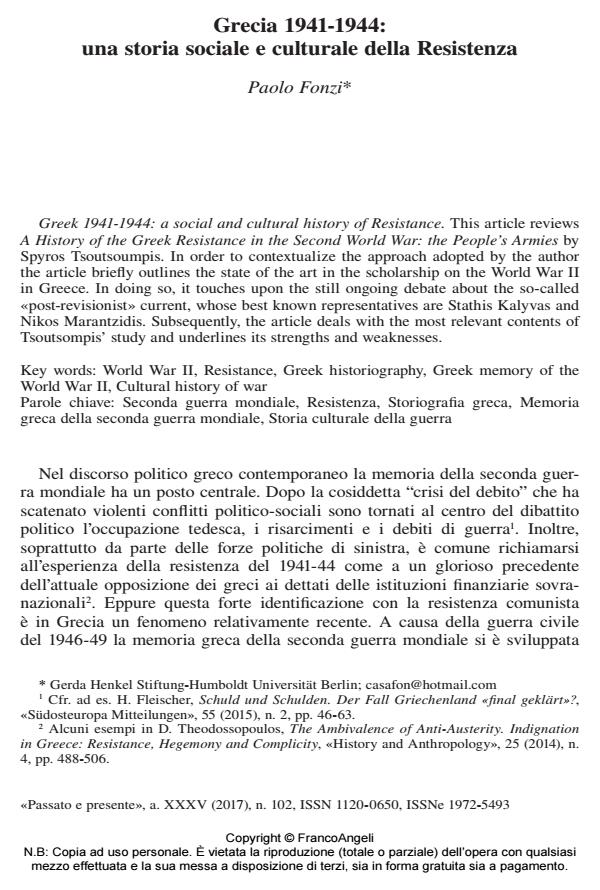Greek 1941-1944: a social and cultural history of Resistance.
Journal title PASSATO E PRESENTE
Author/s Paolo Fonzi
Publishing Year 2017 Issue 2017/102
Language Italian Pages 10 P. 156-165 File size 99 KB
DOI 10.3280/PASS2017-102009
DOI is like a bar code for intellectual property: to have more infomation
click here
Below, you can see the article first page
If you want to buy this article in PDF format, you can do it, following the instructions to buy download credits

FrancoAngeli is member of Publishers International Linking Association, Inc (PILA), a not-for-profit association which run the CrossRef service enabling links to and from online scholarly content.
This article reviews A History of the Greek Resistance in the Second World War: the People’s Armies by Spyros Tsoutsoumpis. In order to contextualize the approach adopted by the author the article briefly outlines the state of the art in the scholarship on the World War II in Greece. In doing so, it touches upon the still ongoing debate about the so-called «post-revisionist» current, whose best known representatives are Stathis Kalyvas and Nikos Marantzidis. Subsequently, the article deals with the most relevant contents of Tsoutsompis’ study and underlines its strengths and weaknesses.
Keywords: World War II, Resistance, Greek historiography, Greek memory of the World War II, Cultural history of war
Paolo Fonzi, Grecia 1941-1944: una storia sociale e culturale della Resistenza in "PASSATO E PRESENTE" 102/2017, pp 156-165, DOI: 10.3280/PASS2017-102009